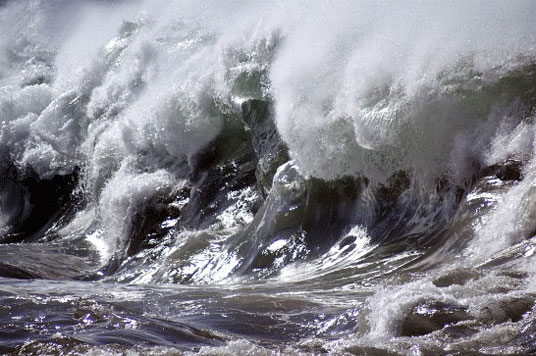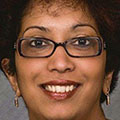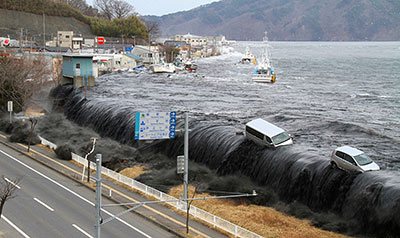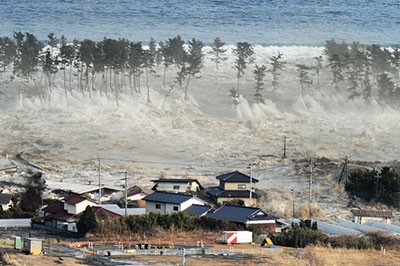Profs play key role in tsunami warning and mitigation system

Mon, 10 Nov 2014 12:11:00 GMT
The University’s Global Disaster Resilience Centre formally involved with Risk Assessment and Management Team of UNESCO’s Intergovernmental Co-ordination Group for the Indian Ocean Tsunami Warning and Mitigation System
 ON December 26, 2004, Dilanthi Amaratunga (pictured left) – who is now a Professor at the University of Huddersfield – was coming to the end of a family visit to her home country of Sri Lanka. There were indications that a serious environmental disturbance was developing. “Small boys were running towards us saying the sea was coming to the land!” she said.
ON December 26, 2004, Dilanthi Amaratunga (pictured left) – who is now a Professor at the University of Huddersfield – was coming to the end of a family visit to her home country of Sri Lanka. There were indications that a serious environmental disturbance was developing. “Small boys were running towards us saying the sea was coming to the land!” she said.
It was the very day of the Indian Ocean Tsunami that would take more than 230,000 lives, displace more than 1.6 million people around the region and cause massive economic damage.
 Professor Amaratunga’s Sri Lankan family were unharmed, despite living close to the coast, but several friends lost family members and were severely affected.
Professor Amaratunga’s Sri Lankan family were unharmed, despite living close to the coast, but several friends lost family members and were severely affected.
Now, ten years after the event, she is co-director of the University of Huddersfield’s Global Disaster Resilience Centre and she and her colleague, Professor Richard Haigh (pictured right), are making repeated return visits to the region as part of major efforts to ensure that communities are better equipped to cope with a future catastrophe and recover more quickly from its impact.
The two professors are formally involved with the Risk Assessment and Management Team of UNESCO’s Intergovernmental Co-ordination Group for the Indian Ocean Tsunami Warning and Mitigation System. A total of 28 countries around the affected region are participating in the project.
10th anniversary of the tsunami
 Professor Amaratunga and Professor Haigh have already taken part in a design and planning workshop that took place at the University of Moratuwa, in Colombo, Sri Lanka. They developed training modules and materials for a regional workshop that they will attend in February, 2015.
Professor Amaratunga and Professor Haigh have already taken part in a design and planning workshop that took place at the University of Moratuwa, in Colombo, Sri Lanka. They developed training modules and materials for a regional workshop that they will attend in February, 2015.
Before then, on November 23-24, the Huddersfield-based professors will visit Indonesia for a memorial event, commemorating the anniversary of the tsunami, but also collating the lessons that have been learned over a decade that has seen the development of a regional early-warning system, to be improved further by the new guidelines.
The experience of Japan after its Pacific coast tsunami of 2011 taught many lessons that have been incorporated into new guidelines for the Indian Ocean region, said Professor Haigh. Pictured: Japanese tsunami wave hits Miyako (top) and below the wave drives onto the Japanese coast of Natori.
 There is also to be an event in Colombo in early December, attended by the two Huddersfield professors. This will encapsulate the best practices and the lessons learned since 2004 and will include presentations from key organisations, including Huddersfield’s Global Disaster Resilience Centre.
There is also to be an event in Colombo in early December, attended by the two Huddersfield professors. This will encapsulate the best practices and the lessons learned since 2004 and will include presentations from key organisations, including Huddersfield’s Global Disaster Resilience Centre.
Professor Haigh said that the improved resilience of the region is in part derived from its early-warning systems.
“The technology is in place. They have 25 seismographic stations relaying information to 26 national tsunami information centres, as well as six deep-ocean buoys to assess and report of an impending tsunami.”
“The key challenge is identifying methods of relaying information from the centres to the civilians at risk,” added Professor Haigh. For example, alerts are forwarded to threatened countries and also made available to the general public. National governments warn citizens through a variety of means, including SMS messages, radio and television broadcasts, sirens from dedicated platforms and loudspeakers.
In the case of Sri Lanka, said Professor Amaratunga, the impact of the 2004 tsunami was exacerbated by the civil war that was then raging in the country. International aid programmes made a significant impact in the south, but the east was less accessible because of the conflict and scars from tsunami were still apparent there many years later.
Now the work of a wide range of agencies, including UNESCO’s Intergovernmental Oceanographic Commission, and the contribution of specialist researchers, including Huddersfield’s Global Disaster Resilience Centre, means that the effects of a future crisis are likely to be less severe.
 The Huddersfield centre is also training new generations of experts in the field. Professors Amaratunga and Haigh are supervising several PhD researchers, including a significant number from Indonesia. They also edit the International Journal of Disaster Resilience in the Built Environment, which aims to influence and inform policy and practice in the field.
The Huddersfield centre is also training new generations of experts in the field. Professors Amaratunga and Haigh are supervising several PhD researchers, including a significant number from Indonesia. They also edit the International Journal of Disaster Resilience in the Built Environment, which aims to influence and inform policy and practice in the field.
- The Global Disaster Resilience Centre at the University of Huddersfield has now been accepted as a member of the UN Habitat University Network. UN-Habitat is the United Nations programme working towards a better urban future. Its mission is to promote socially and environmentally sustainable human settlements development and the achievement of adequate shelter for all.







